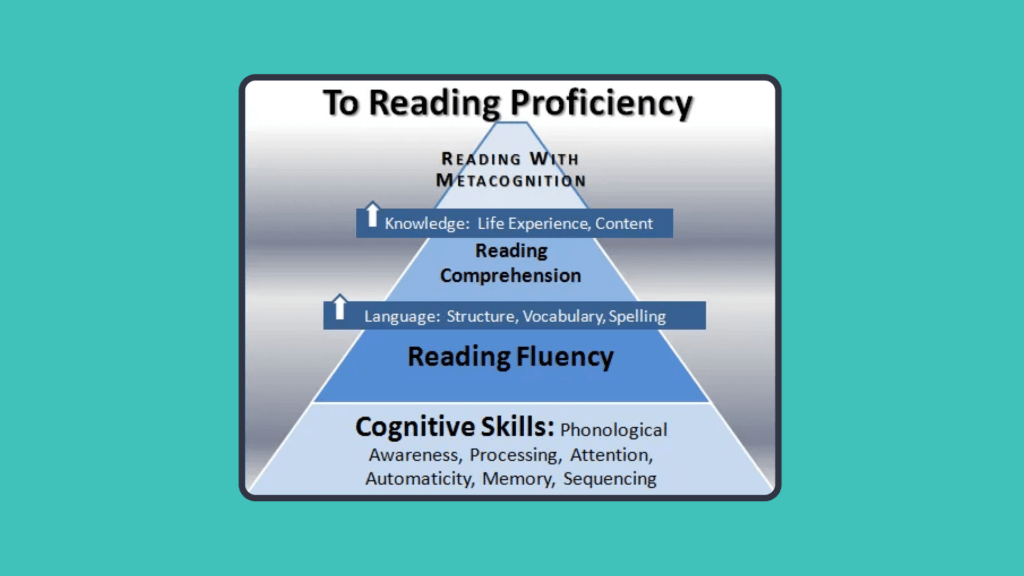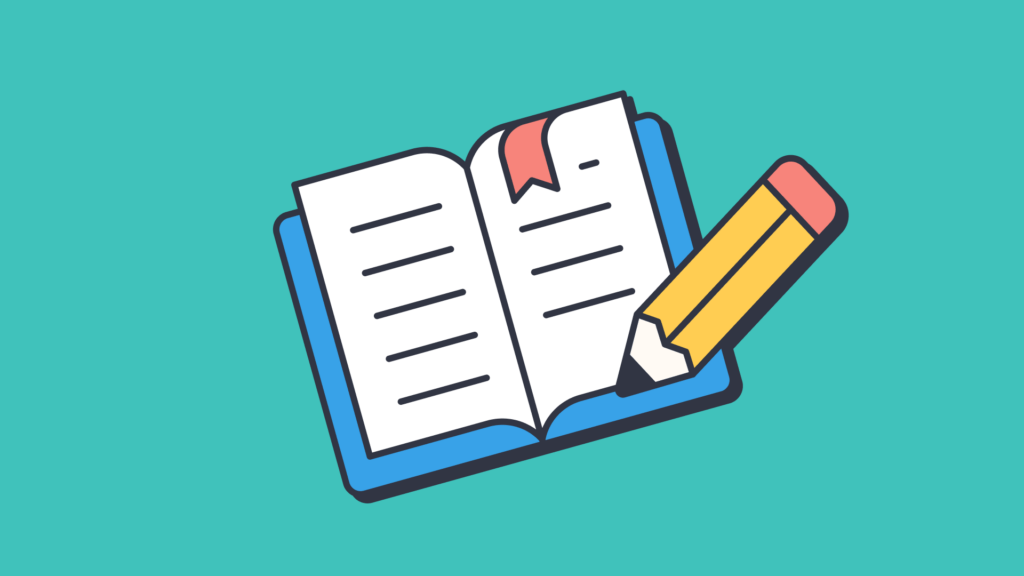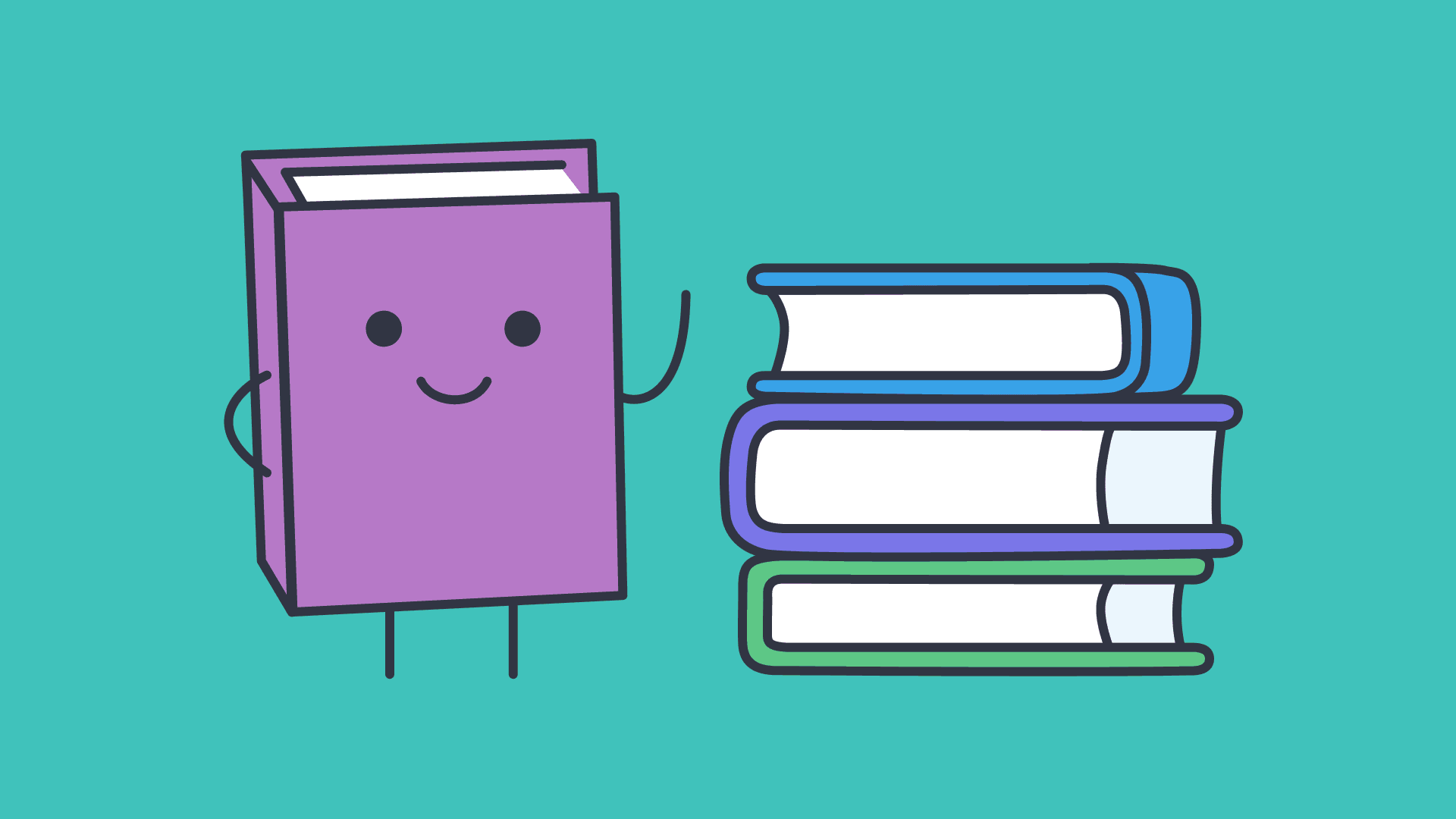How to use metacognition to improve reading comprehension
In this guide
What is metacognition in reading?
Education psychologists Biehler and Snowman provide the following definition of metacognition in their 1993 textbook Psychology Applied to Teaching:
The term cognition is used to describe the ways in which information is processed –i.e. the ways it is attended to, recognized, encoded, stored in memory for various lengths of time, retrieved from storage and used for one purpose or another. Metacognition refers to our knowledge about these operations and how they might best be used to achieve a learning goal. (p. 390).
Biehler and Snowman
In other words, metacognition is thinking about thinking. Self-awareness of one’s own thought processes and ongoing understanding when attempting to perform a task or learn something new is an incredibly valuable skill. Employing metacognition in reading means monitoring one’s own comprehension – or incomprehension – of the text as it is read.

In the pyramid above visualizing the process of becoming a proficient reader, employing metacognition is the top tier – the ultimate reading skill.
Metacognitive reading strategies for the classroom
So, what are some ways we can teach our students to become aware of their cognitive processes so that they can use them to their advantage? Read on for some strategies to use in your classroom.
1) Planning
When approaching any challenging task, it always helps to come armed with an action plan. Have your students pregame their reading by examining the text holistically before jumping in. Some things to consider before reading include:
- What is the title, and what does it tell me?
- Who is the author?
- What type of text is this?
- Who is this meant for?
- What was it written to convey?
Considering these questions may answer plenty about the text before they even begin reading it! Your students will be attempting to answer these questions by activating their prior knowledge, which is a huge part of reading comprehension.
After they’ve previewed the text, your students should also have a plan for what they can do if they get stumped. This will minimize frustration and the dreaded feeling of “I can’t do this”. Be sure to reinforce the fact that it’s okay not to understand everything right away – that’s what learning is all about!
Is there somewhere your students can look for answers, like an index or a dictionary? Are there reference books on hand if they need more knowledge about a certain topic? Is there anyone they can ask for help?
2) Visualization
Arguably the most entertaining part of reading is painting a picture of the story in your mind. Visualizing the text as its being read can deepen comprehension of the text and promote engagement with it. Your students should do their best to gather details from the text in order to imagine the setting, characters, and events taking place.
Visualization is a great metacognitive strategy for checking in on comprehension. If your students are having trouble picturing what’s happening in the story, that’s a signal that it’s probably a good idea to go back and reread a portion of the text.
Suggested activity: Ask your students to illustrate the text! The relationship between text and image is a mutually beneficial partnership, lending clarification to the meaning the author is attempting to convey.
3) Talk it out
Whenever I encounter a problem in my daily life, my first instinct is to handle it by myself. But that offers limited insight and implicit bias. Sometimes talking it out with a friend or a peer helps me to see things from a new vantage point, and the solution may not be one I could have arrived at by myself.
The same goes for academia. When your students are reading a challenging text, provide the opportunity for them to talk it out. This could be in the form of a think-pair-share, small group, or whole class discussion.
Armed with new knowledge, your students will be ready to jump back into the text with a deeper understanding of the content provided by multiple perspectives.
4) Clarification

If your students do hit a roadblock in their comprehension of a text, it’s time to revisit that plan. Allow them time within their assignment or unit to equip themselves with the knowledge they need for a deeper understanding of the work. Make sure to provide resources or pathways for them to locate that knowledge.
Some examples are:
- A dictionary or encyclopedia
- Library or learning center visit
- Trusted websites
- Academic journals
- Approved educational videos
- Peer to peer discussion and brainstorming
I myself often pause when reading to look up an unfamiliar word or place. I wish I’d known when I was younger that stopping to gather more information was an opportunity, not a failure! That’s how reading translates to learning, after all.
5) Making connections
This metacognitive reading strategy involves linking text with personal experiences, feelings, or knowledge. The ability to make connections between what is being described in a text and real, lived experiences fosters engagement with the text and a deeper understanding of the material.
ReadWriteThink.org outlines three main types of connections that can be made when reading:
- Text to self connections
- Does this piece of text remind you of anything personally?
- Are the characters in the story relatable to you or anyone in your life?
- Does anything in this text relate to anything in your own life?
- Text to text connections
- Does this text remind you of anything else you’ve read?
- Is this text similar to, or different from other texts you’ve read? How?
- Text to world connections
- Is there anything in the real world that relates to this text?
- How are the events occurring in this text similar to, or different from events that have happened in the real world?
I personally love reading fiction novels set in places I’ve lived or visited. Making those connections as I read makes the story more exciting. It’s also one of the many reasons historical fiction is a fantastic tool in the Social Studies classroom!
6) Graphic organizers
Visual thinkers may benefit from writing out their thoughts, questions, and the connections they’ve made while reading. Graphic organizers are a great way to chart out pertinent information, relationships, and storylines.
Graphic organizers can help with reading comprehension by organizing information into categories, chunking material into more digestible units, and attributing meaning to vocabulary or themes that may not be obvious at first.
Once your students have become pros at utilizing graphic organizers and charts, they should be able to transfer the thought processes involved in their physical creation and internalize that structure, forging a metacognitive pathway for analyzing text.
Here are some downloadable graphic organizer worksheets to try out in your classroom.
7) Summarizing key points
Summarizing key points or ideas is a popular teaching strategy across all content areas. The ability to identify the most important parts of a text while weeding out the more erroneous is a valuable skill for reading comprehension.
In order to summarize a text they’ve read, your students will have to consider the whole of the information they’ve taken in. Synthesizing key ideas into a succinct summary is a metacognitive skill that will strengthen with practice.
8) Reflection

Reflecting is an important part of comprehension. Revisiting something you’ve read will not only help cement it within your memory, it may help clarify some outstanding confusion. Hindsight is 20/20!
Suggested activity: One particularly effective way to have your students reflect on a text is to assign them reading journals. After reading a portion of text, ask them to record their initial thoughts, questions, and any strategies they implemented to better understand the text. This will promote awareness of their own thinking processes.
Here are some prompts to get them started:
- What connections did I make while reading this text?
- What was easy to visualize? What wasn’t?
- What vocabulary was challenging, and how did I decode it?
- What strategies did I use to clarify the text?
- What questions do I still have?
Conclusion
Metacognition is just a fancy way to describe self-awareness around one’s own thoughts and learning processes. It’s important in reading comprehension mainly because it helps your students to understand how they think and learn – which is a skill they will take with them and apply to all areas of their educational journey. This ability is one that will make your students self-reliant seekers of knowledge, and stellar learners!
Resources and further reading
- Abromitis, B. (1994). The Role of Metacognition in Reading Comprehension: Implications for Instruction. Literacy Research Report No. 19.
- Annenberg Learner. (n.d.). Thinking About Thinking: Metacognition. [online] Available at: https://www.learner.org/series/the-learning-classroom-theory-into-practice/thinking-about-thinking-metacognition/.
- ctl.columbia.edu. (n.d.). Metacognition | Columbia CTL. [online] Available at: https://ctl.columbia.edu/resources-and-technology/resources/metacognition/.
- El-Koumy, A.S.A. (2004). Metacognition and Reading Comprehension: Current Trends in Theory and Research. SSRN Electronic Journal. doi:https://doi.org/10.2139/ssrn.2364871.
- Flavell, J.H. (1979). Metacognition and cognitive monitoring: A new area of cognitive-developmental inquiry. American Psychologist, 34(10), pp.906–911. doi:https://doi.org/10.1037/0003-066X.34.10.906.
- Fogarty, R. (1994). How to Teach Metacognitive Reflection. Corwin.
- Kolić-Vehovec, S. and Bajšanski, I. (2006). Metacognitive strategies and reading comprehension in elementary-school students. European Journal of Psychology of Education, 21(4), pp.439–451. doi:https://doi.org/10.1007/bf03173513.
- National Geographic Learning / Cengage. (n.d.). Available at: https://ngl.cengage.com/assets/downloads/inside_pro0000000029/am_moore_bld_read_pwr_seb21_0411a.pdf [Accessed 24 Jun. 2024].
- Reza Ahmadi, M., Nizam Ismail, H. and Kamarul Kabilan Abdullah, M. (2013). The Importance of Metacognitive Reading Strategy Awareness in Reading Comprehension. English Language Teaching, 6(10), pp.235–244. doi:https://doi.org/10.5539/elt.v6n10p235.
- Snowman, J. and Biehler, R.F. (2003). Psychology applied to teaching. Boston: Houghton Mifflin.
- Stanton, J.D., Sebesta, A.J. and Dunlosky, J. (2021). Fostering Metacognition to Support Student Learning and Performance. CBE—Life Sciences Education, [online] 20(2). Doi: https://doi.org/10.1187/cbe.20-12-0289
- Wilhelm, J.D. (2013). Improving comprehension with think aloud strategies : modeling what good readers do. Scholastic Teaching Resources.

Jessica Pastore
briefcase iconMuseum Educator
Jessica Pastore is a museum educator living and working in New York City. Her background is in social studies education and world history. She has taught in both classroom and gallery settings for the past ten years.
Other posts
Want more content like this?
Subscribe for blog updates, monthly video releases, trending topics, and exclusive content delivered straight to your inbox.













